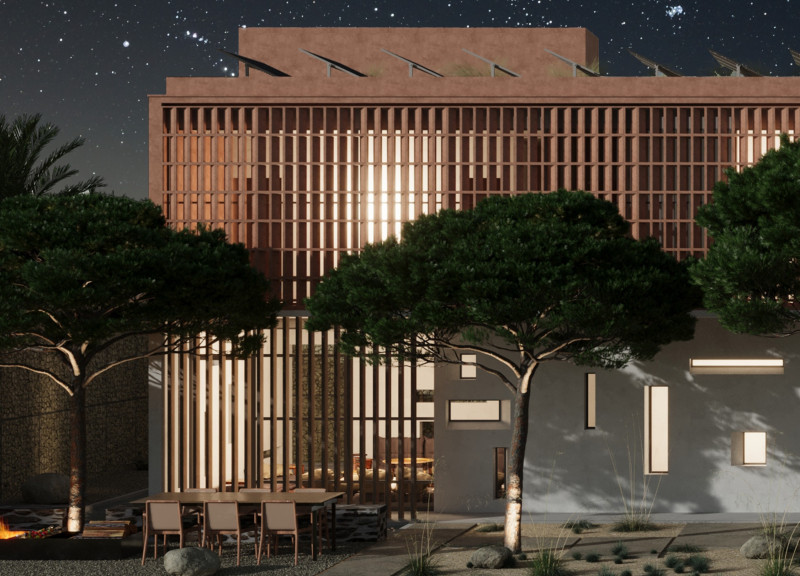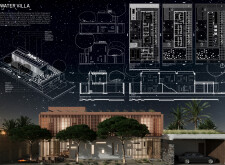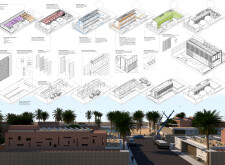5 key facts about this project
### Project Overview
Located in a desert region characterized by high temperatures and limited rainfall, the Water Villa addresses the challenges of water scarcity through innovative architectural solutions. The design prioritizes sustainable living, aiming to create a self-sufficient habitat that harmonizes with the surrounding environment. By leveraging abundant sunlight for energy and incorporating advanced technologies, the project strives for enhanced comfort and resilience.
### Materiality and Aesthetic Integration
The facade utilizes a combination of rammed earth and shaded wooden screens, which provide both thermal regulation and protective sunshading. The rammed earth offers thermal mass, helping to maintain interior temperatures, while the wooden screens are strategically positioned to mitigate heat gain. Notable materials used in the construction include rammed earth, timber for the screens, steel framework, and glass. The landscaping incorporates indigenous plant species and local stone, enhancing the villa’s connection to its environment while improving microclimatic conditions.
### Spatial Strategy and Sustainability Innovations
The layout of the Water Villa is organized into distinct living, service, and communal zones, allowing for both privacy and social interaction. Open-plan design principles promote natural airflow and light penetration, fostering a strong relationship with the outdoor context. A Hydrothermal Airflow Regulation System (HARS) enhances temperature control through natural air circulation while optimizing water use within the structural systems. Additionally, rainwater harvesting systems effectively capture and manage water for various applications, underscoring the project’s commitment to conservation.
Unique features of the Water Villa include a sophisticated water management system capable of storing approximately 14,440 liters of water, sufficient to support the needs of 5-6 residents for an extended period under conditions of limited rainfall. The integration of solar energy systems to power various utilities exemplifies a proactive approach to energy sustainability, while the design acknowledges local cultural practices by incorporating traditional elements alongside modern materials.























































